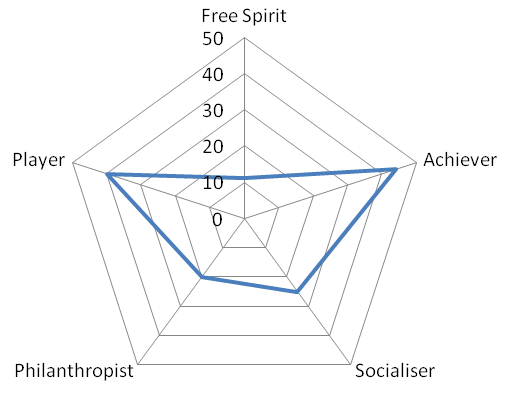There is nothing worse than playing against people who are miles ahead of you in terms of either ability or equipment. It is very demoralising to lose time and time again when in reality you never have a chance. Take leaderboards as a good example. Very often the people at the top are always the same few names, over and over again. For most companies, this does not seem to get addressed for some reason. It’s a bit like pitting your local Sunday Dad’s league against Chelsea every week. There is no opportunity for the Sunday players to ever be as good as Chelsea, they will get destroyed week after week until they give up playing. It is totally unfair and unbalanced. This is why in organised sports, you have divisions and leagues. You only play against people that you have a fair(ish) chance of beating.
Divisions
So the first tip is if you find this happening, create leagues. Let the best of the best fight it out and let the others prove themselves against people they stand a chance with. If they get to top frequently, give them the opportunity to take on the next division and maybe get promoted. This has an added benefit of creating a pool of people you know are the best at something and (if you take into account the user journey) have become the masters. At this point, you should be trying to get them to give back, to train up those in the lower division.
Of course, this all relies on transparency and everyone understanding the rules. It is hard to get good at a game when you don’t know the rules!
Handicaps
The second tip is to create balanced or relative scores, a bit like a golf handicap. A modifier can be applied to scores to either handicap those who are significantly better, or power up those who are newer or don’t yet have all the required skills. So for instance, the expert may get 50 points a day, whereas the lower skilled worker gets 30. However, because of the handicap modifier, you could have it set that every 1 point is worth 1.5 to the lower end player, giving them a slight boost (to 45 rather than 30) and helping push them a little higher in the tables. This does run the risk of better players screaming about it being unfair on them though.
Levels
You could also balance the game so that early on it is much easier to get points, so new players can quickly gain points, where hardened players need to work harder and demonstrate more skills to get the same number of points. This is a little like divisions as lower level players are more likely playing “against” other lower player levels, but their points can also begin to look similar to those of the higher level players. This relies on keeping the “flow” of challenge and skill well balanced. Always keeping a challenge, but never pushing the player too far out of their comfort zone or letting them get bored.
Team Balancing / Score Normalisation
Finally, team balancing. This is something I have come across a few times, especially in enterprise gamification. I have yet to find the perfect solution! The problem, the company wants departments to compete against each other, however, no department is the same size! So what you can end up with is a team of 6 competing with a team of 30. If your system is collecting points for various activities, it becomes very tough for the smaller team to compete with the larger team, To demonstrate the same activity, a team of 30 only needs 20% of their members to be active!
The first solution is to measure quality over quantity of activity. However, this still has the same issue. In a team of 30, you only need 20% to produce quality compared to 100% of the team of 6.
Another solution that I have considered, but is complicated to really achieve well (I have tried and it was ok in my tests) is creating normalised scores based on the average team size.
For example. If you have 4 teams of different sizes.
The average team size is calculated as 12. The score modifier for a team is calculated as your team size / the average team size.
Points are them multiplied by the modifier.
| Team Size | Team Score | Modifier | Normalised Score |
| 10 | 30 | 1.2 | 36 |
| 5 | 30 | 2.4 | 72 |
| 20 | 30 | 0.6 | 18 |
| 12 | 30 | 1.0 | 30 |
| Average Team Size 12 | |||
This requires great transparency and great communication of the rules to everyone, but it can work.
Those are just a few ideas, there are loads more. What have you done to fix this in your gamification efforts?
Similar Posts:
- 5 tips for good Gamification I learned from designing games.
- User Types Test: Stats and conclusions
- Teams and Competitive play.


Also published on Medium.


Great tips! I was thinking about applying levels for our future strategy. Thank you for inspiration!